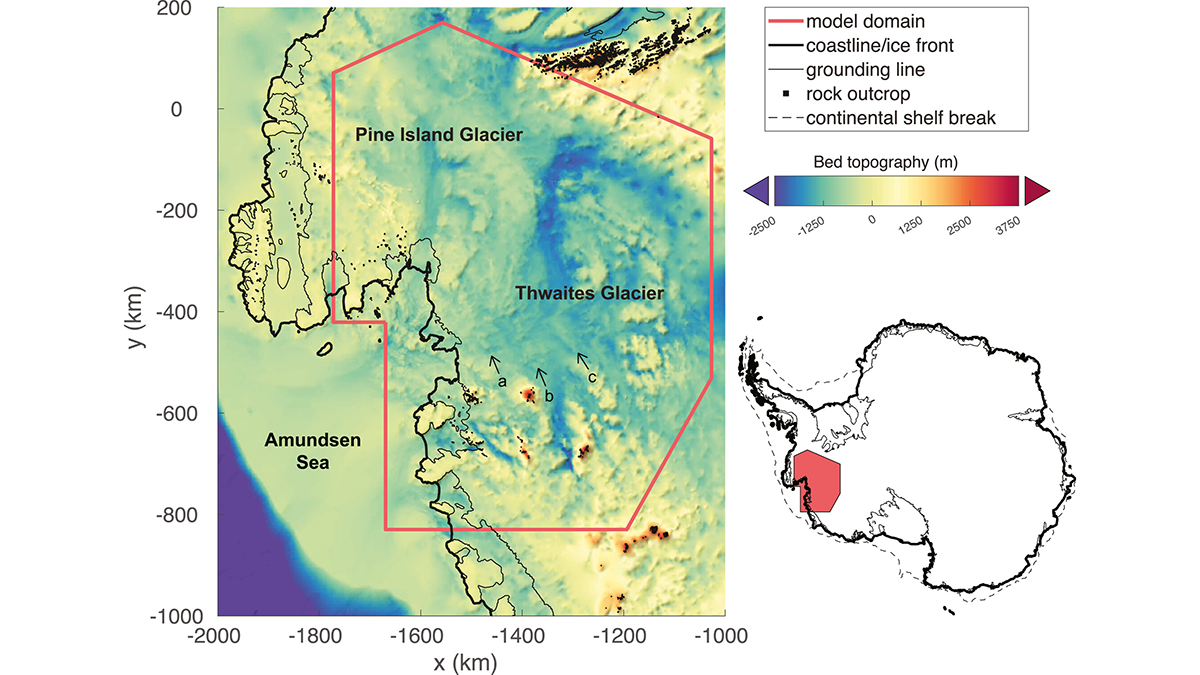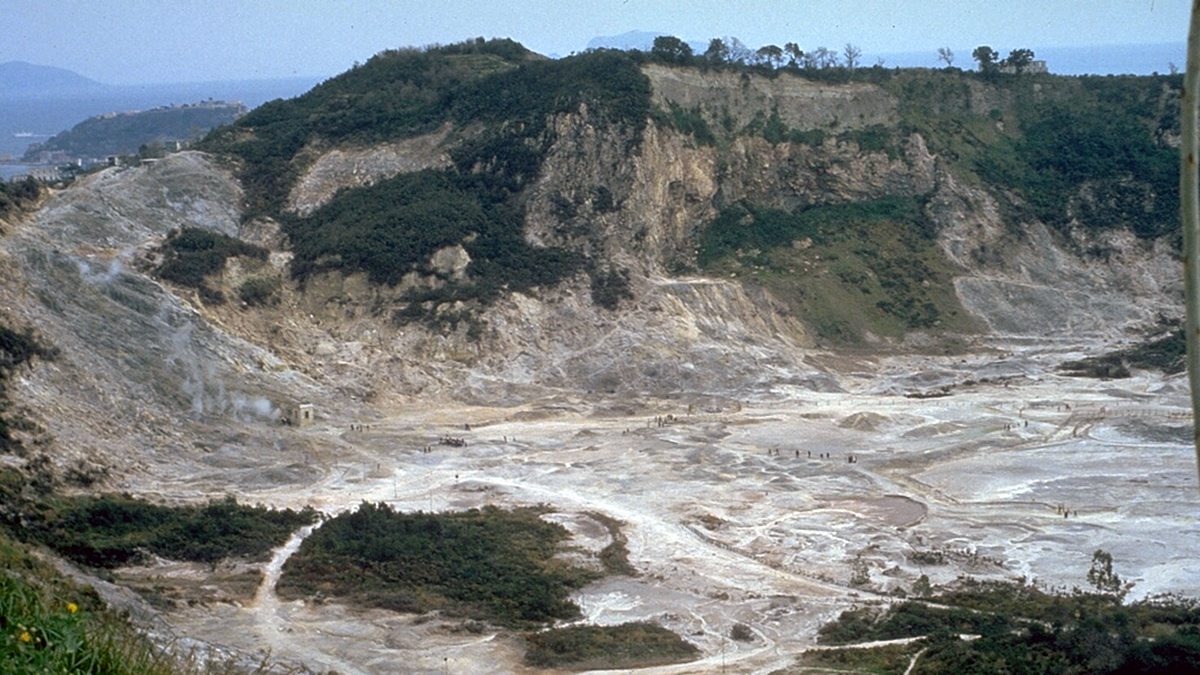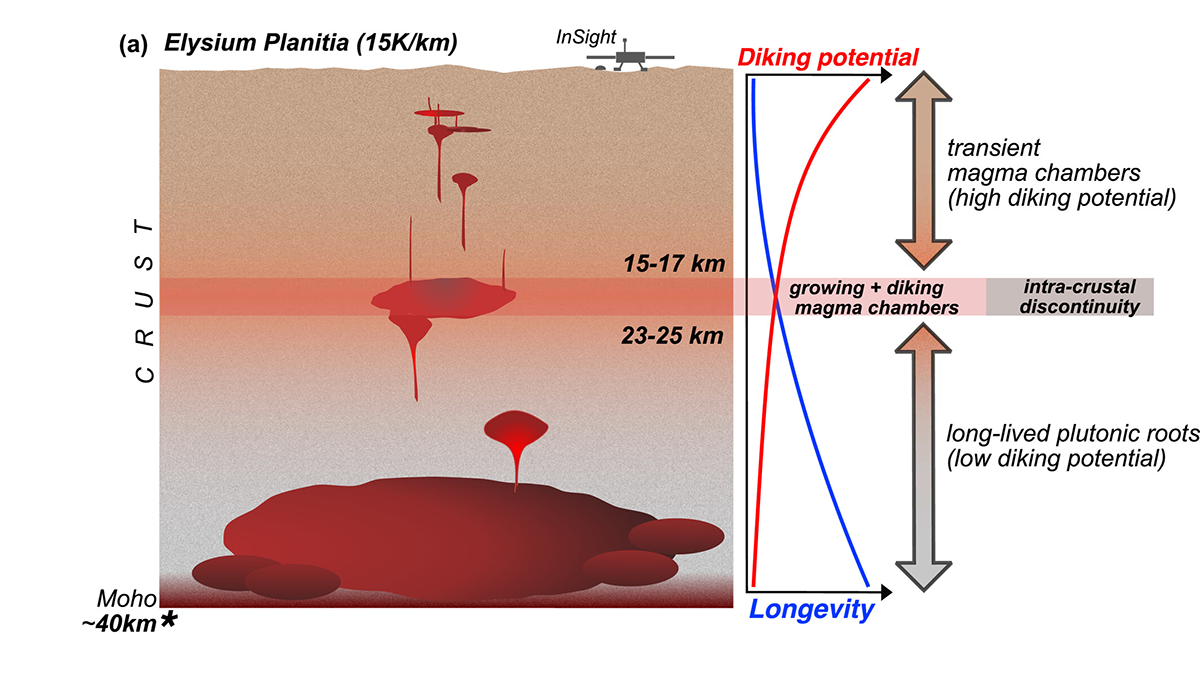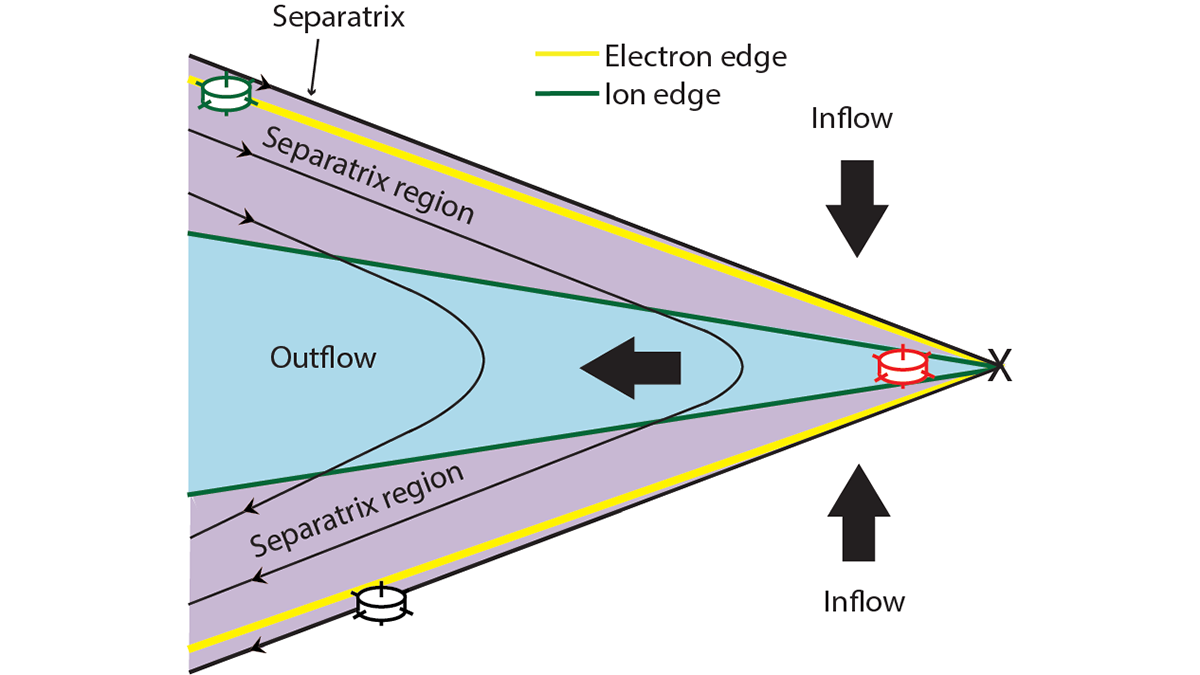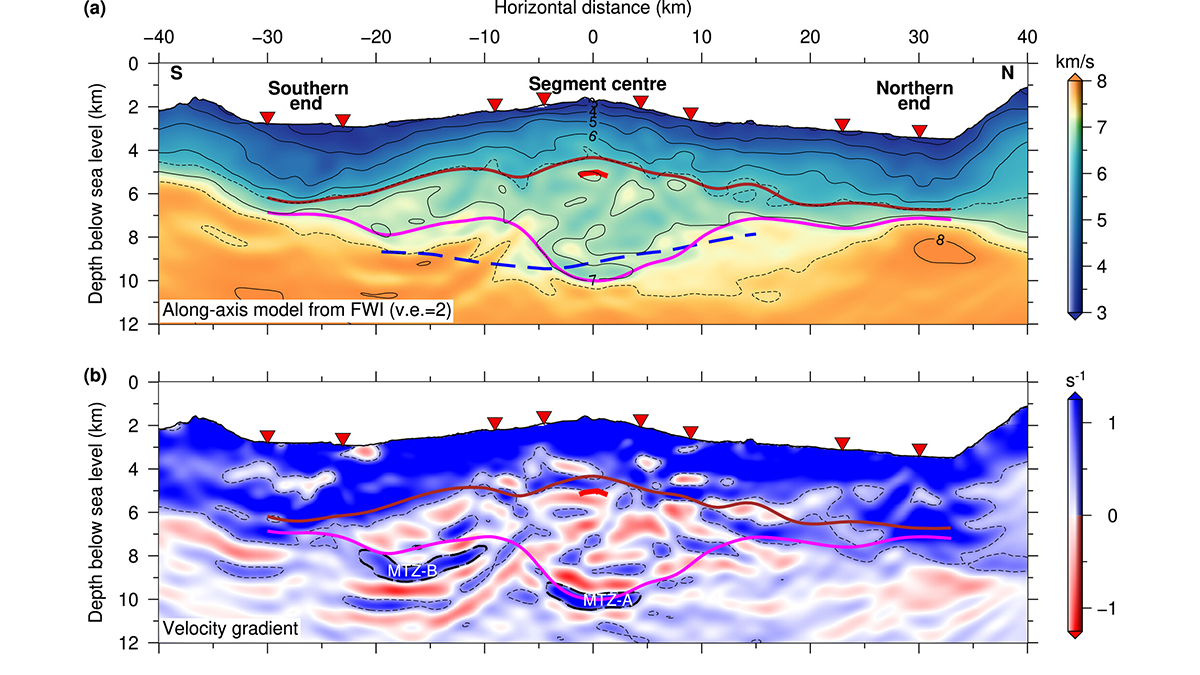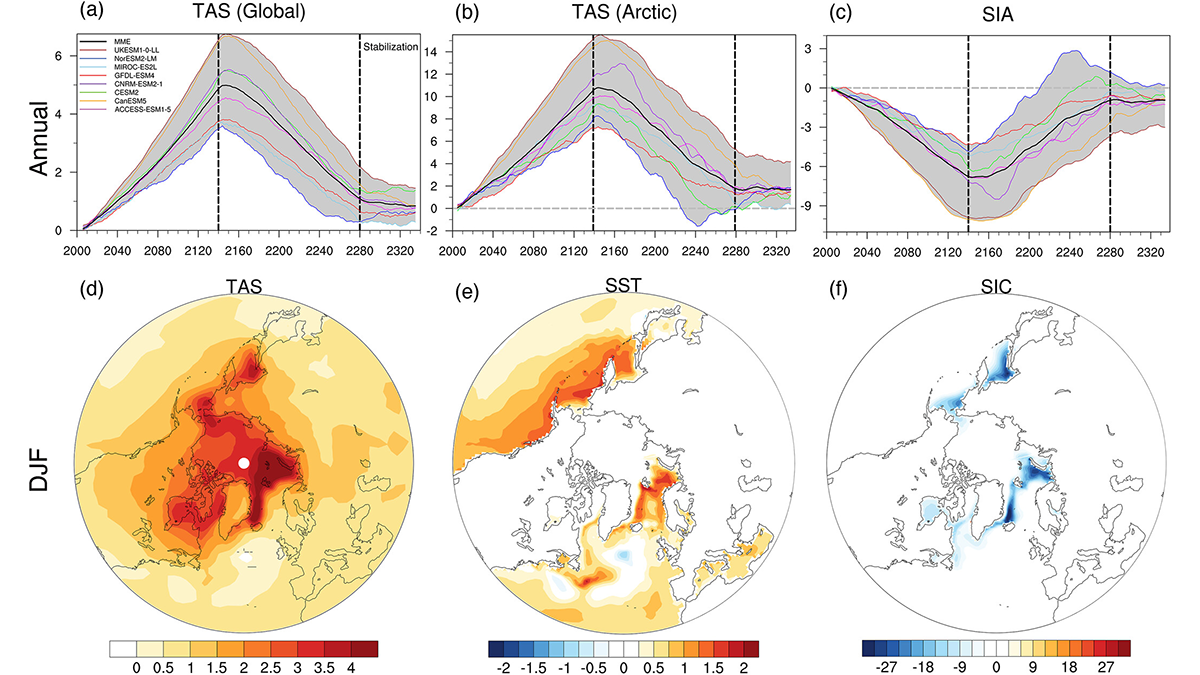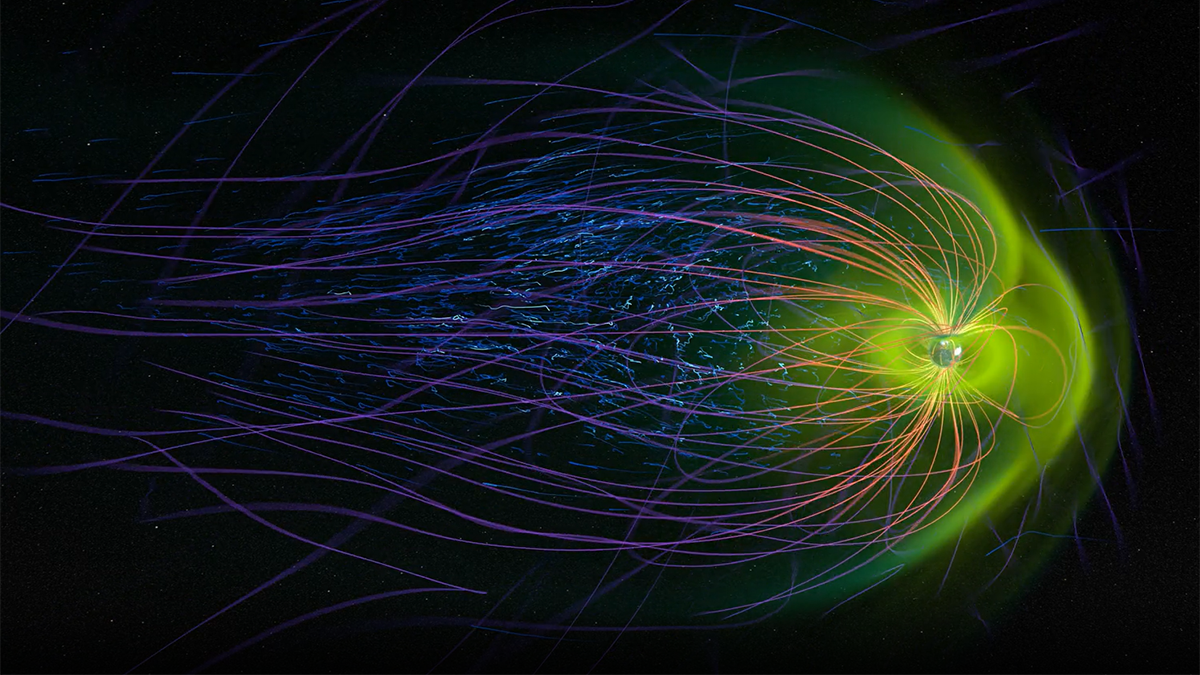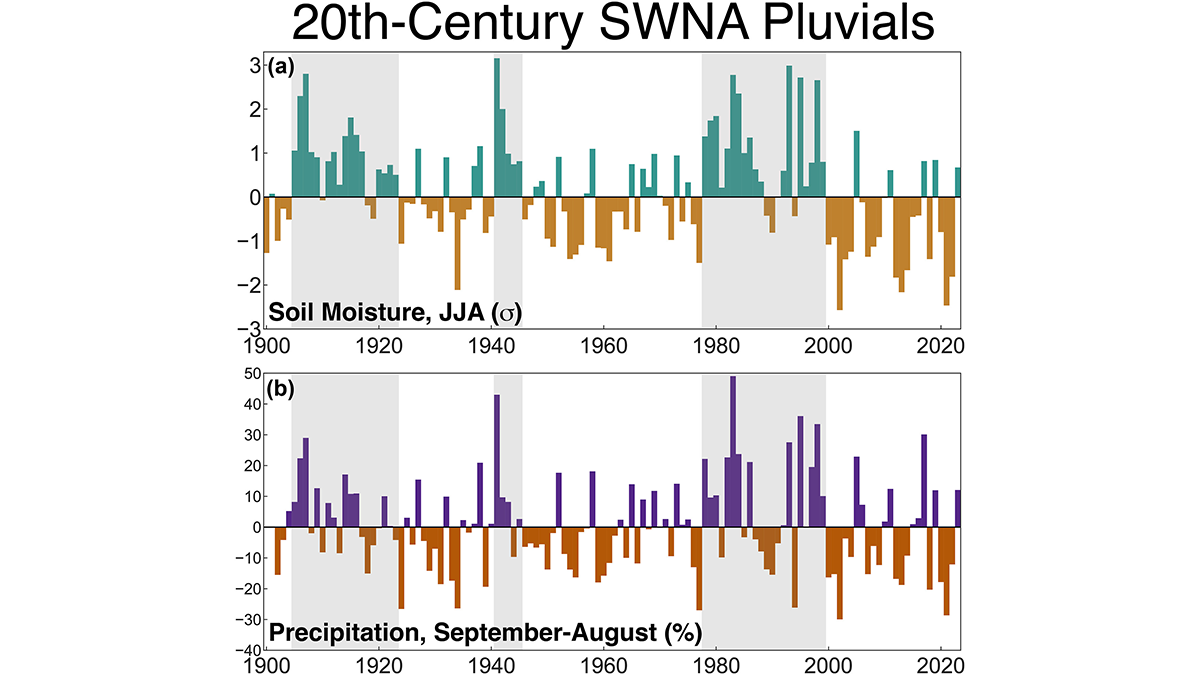The Antarctic ice sheet behaves like a non-Newtonian fluid and may be more nonlinear than previously thought. This impacts its future stability and requires revisions to predictions of sea level rise.
Editors’ Highlights
Deflected Dikes Perturb the Plumbing System
A multidisciplinary synthesis of the Campi Flegrei, Italy volcanic setting highlights the importance of sub-caldera layering for magma dynamics.
Martian Magmas Live Long and Prosper
The depths, longevity, and potential to generate silicic compositions of magma chambers are linked to crustal temperature, which varies across Mars and over its geological history.
Fast Flows in Earth’s Magnetotail Surveyed by NASA Satellites
A survey of high-speed electron flow observed by NASA satellites in the Earth’s magnetotail is presented and related to the process of magnetic field line reconnection and particle acceleration.
Strange Branching of Water Flows Through Rivers and Lakes
Sometimes rivers split into branches in unusual ways, reflecting the complexity of Earth’s water system on land and how much we still must learn about it.
Seismic Images Show Major Change Along the Mid-Atlantic Ridge
New seismic images of the Lucky Strike slow-spreading segment of the Mid-Atlantic Ridge show thick lower crust at the center that thins in both along-ridge directions.
Arctic Sea Ice After CO2 Recovery: Implications for North Atlantic Weather
Incomplete Arctic sea ice recovery results in equatorward-shifted winter jets. The North Atlantic jet shift is particularly uncertain due to the ocean circulation acting as an additional driver.
Investigating Rainfall-Rich Periods in North America
A record of soil moisture that extends over one thousand years allows for the investigation of occurrence and causes of modern and historical rainfall-rich periods.
Taking Our Paleoceanographic Tools to the Next Level
A new modeling study shows that to accurately interpret data derived from an iconic proxy of past Atlantic overturning strength, we must consider the complex factors governing the proxy systematics.

